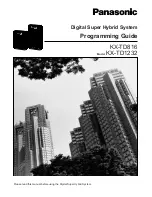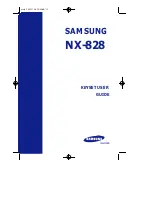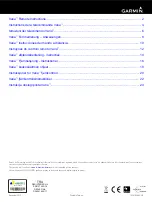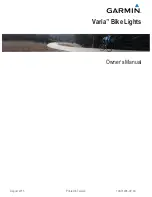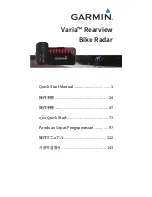
SHORTAGES, DAMAGES AND RETURN AUTHORIZATIONS
SAFETY INFORMATION / RECEIVING & INSPECTION
IMPORTANT SAFETY GUIDELINES
Before uncrating, check quantity of items
received against bill of lading to confirm
that all equipment has been received.
Next, determine if any damage has
occurred. Damage and/or shortage in
shipment should be reported immediately
to both Roach and carrier. Obtain signed
damage report from carrier agent and send
copy to Roach.
Do not repair any damage
before obtaining this report.
Finally, con-
sult factory to determine if entire shipment
must be returned to factory for repair
or
if
a replacement order should be entered for
replacement equipment.
Therefore, it is imperative that the bill of
lading (or, accompanying freight documen-
tation) be checked to ensure receipt of ALL
units ordered including ALL accessories.
After receipt and initial inspection, carefully
remove crating and look for essential com-
ponents and specific accessories that may
have been boxed and attached (or ‘band-
ed’) to crating material such as guard rails
and hardware which may be packaged
and shipped in this manner. Save all
hardware for subsequent use by installation
personnel.
NOTE:
Do not return goods to factory
without prior, written return authorization.
Unauthorized returns are subject to refusal
at factory. Also, some items (electric
motors, gearbox, etc.) may be shipped
direct from their manufacturer. Thus,
two or more separate shipments may be
required to receive all equipment.
WARNING: All personnel coming in contact with this conveyor should be aware of the following safety guidelines BEFORE USING OR
WORKING AROUND CONVEYOR. NOTE: ALWAYS notify Roach Manufacturing® whenever any conveyor is used in an application
or condition other than was originally intended. Failure to notify Roach® may allow conveyor to be operated in a hazardous operating
condition. Injuries resulting from negligence or violation of safety instructions hereby removes responsibility of product liability claims from
Roach®. Any violation of above safety instructions hereby removes all product liability claims from Roach.
Do not operate conveyor with
protective guards removed. This
includes chain guards, belt guards, snub roller
guards, center drive guards and
any other safety guard.
Do not walk, ride, climb, or touch
moving parts on a conveyor in
operation.
Do not wear loose clothing or
uncovered hair around conveyor.
Do not work near conveyor without
knowing how & where to shut power
“OFF” and lock out power source.
Do not remove jammed product with
conveyor running.
Do not replace parts or perform
maintenance on conveyor, or moving
conveyor parts, without first shutting “OFF”
power to conveyor and locking out power
source.
Do not connect gravity to powered
conveyor without safety gravity
connector brackets.
To prevent electrical shock, conveyor
must be grounded, and have proper
electrical connections in accordance with
federal, state, and local codes.
Safety pop out rollers in conveyors
installed above 7’-0” elevation must be
retained by guard rail, clips, etc. Safety pop
out rollers must be allowed to pop out when
conveyors are installed at or below
7’-0” elevation.
It is the responsibility of conveyor
end-user to comply with all safety
standards including OSHA and other federal,
state, and local codes or regulations. Install
protective guarding and other related safety
precautionary equipment to eliminate
hazardous operating conditions which may
exist when two or more vendors supply
machinery for related use.
Any violation of above safety
instructions hereby removes all
product liability claims from Roach
Manufacturing Corporation
®
.
4
Summary of Contents for 138LRC
Page 1: ......
Page 9: ...V BELT PATHS V BELT PATH FOR SPURS AND CURVES 9...
Page 17: ...MODEL 138LRC ILLUSTRATIONS FOR UNIT WITH END DRIVE SIDE MOUNT END DRIVE 17...
Page 19: ...MODEL 196LRC ILLUSTRATIONS FOR UNIT WITH END DRIVE SIDE MOUNT END DRIVE 19...
Page 21: ...MODEL 138LRCS ILLUSTRATIONS FOR UNIT WITH END DRIVE SIDE MOUNT END DRIVE 21...
Page 23: ...MODEL 196LRCS ILLUSTRATIONS FOR UNIT WITH END DRIVE SIDE MOUNT END DRIVE 23...




















